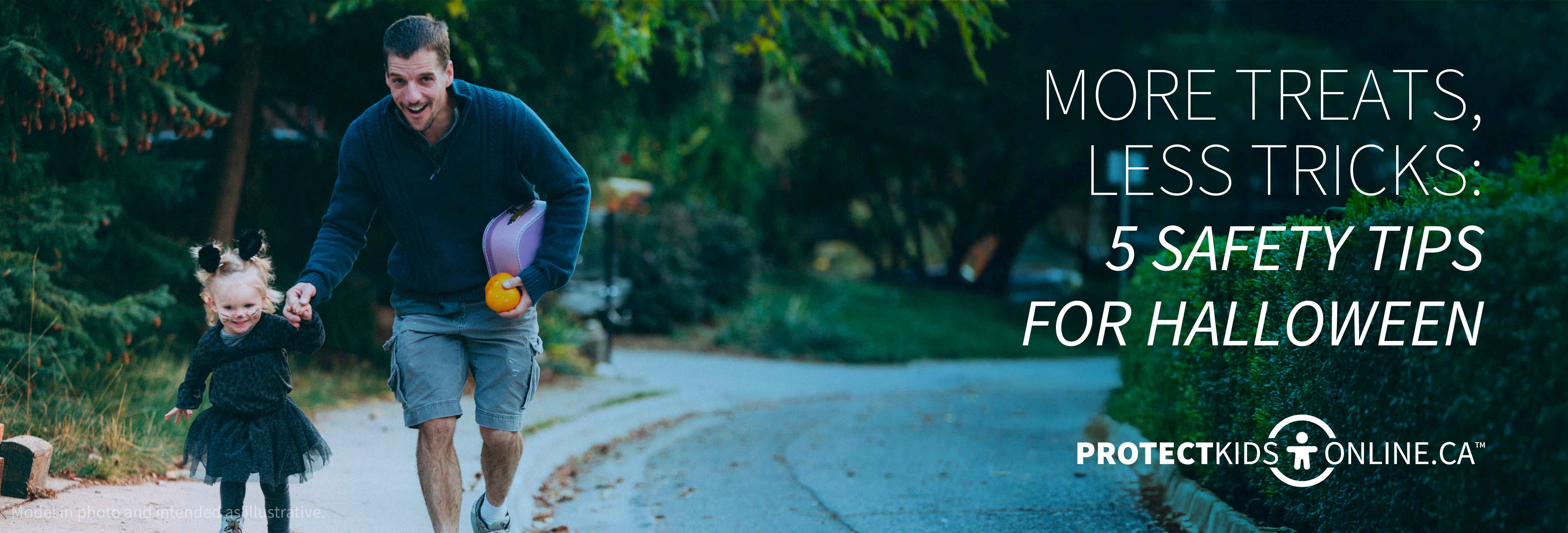More treats, less tricks: 5 safety tips for Halloween
A safe evening of trick-or-treating starts with a family-wide game plan

As little goblins and ghouls across Canada prepare to collect their candy bags, the Canadian Centre for Child Protection (C3P) is encouraging parents to include a safety plan as part of their family’s Halloween preparations.
Personal safety discussions before a night of tricks and treats offer a fang-tastic opportunity to help build your kid’s confidence and competence.
Our 5 Halloween Safety Strategies video can help equip your kids with tools and tips so they can be on the lookout for risky situations and know how to respond.
 Plan a route
Plan a route
For younger children, turn planning your haunted candy route into an annual Halloween ritual. Conjure a map and trace together the safest trail for a night of ghostly good fun.
For older kids flying with friends, discuss their route in advance. Remind them to steer clear of shadowy shortcuts and creepy corners, and instead stick to familiar, well-lit streets filled with fellow treat-seekers. Have them identify safe adults in the neighbourhood who they can summon for help.
 Supervise
Supervise
Even the cutest little vampires and werewolves need a watchful eye! Young children need direct supervision when trick-or-treating. Teach them to stay where they are and to call out for you if you get separated — and practice this before you head into the night.
For older kids braving the dark without you, agree on a curfew that isn’t the witching hour, and set up check-in times throughout the evening. Texts, calls, or candy bag meetups all work — and make sure they check in before changing their route.
 Use the buddy system
Use the buddy system
There’s strength in numbers, even in the dark! Teach your child about the buddy system so they’re never alone on the trail for treats. For children in Grade 2 or lower, a safe buddy could, for example, be someone aged 12 or older who can keep an eye on them.
Remind older kids to stick with their ghoul-friends and were-buddies — no one should haunt the streets alone!
But if you need something meatier to sink your fangs into, visit billybuddy.ca for more information and a fun Halloween activity that brings the buddy system to life!
 Trust their instincts
Trust their instincts
Help your little monsters learn to trust their sixth sense. Remind them to stay alert and listen to their gut — if something feels spooky in an unsafe way, it’s okay to walk away.
Talk through safe ways to respond to scary or uncomfortable situations. Some strategies include:
- Getting help from a buddy;
- Calling for you;
- Going to visit a safe neighbour.
 Encourage assertiveness
Encourage assertiveness
Even warlocks and witches need to set boundaries. Teach children of all ages to set clear boundaries about personal limits. Remind them:
- Never enter someone’s house without checking with you first;
- If someone approaches them while trick-or-treating and asks them to go somewhere, remind your child to not go — and tell a safe adult what happened;
- No matter the reason, they should never go anywhere with anyone — not even Dracula himself! ...unless you’ve given the okay.
With a little preparation, your child’s Halloween can be full of fun, fright, and delight — without any of the real scares. 🎃